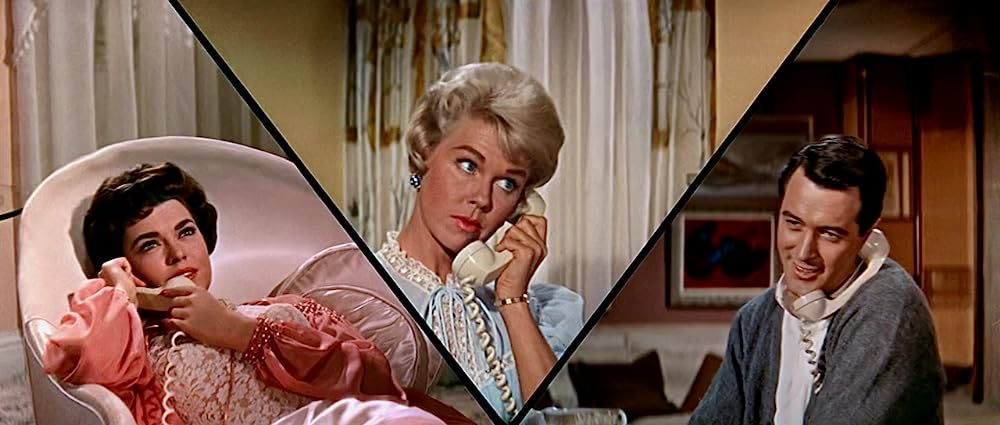“Here we are, poor wretches, in this hell, Condemned to tyranny.” Stromboli (Terra di Dio) [Stromboli] (Roberto Rossellini, 1950)
Jun
27
Decide To Be Married Day

Antonio (Mario Vitale) and Karen (Ingrid Bergman). DP: Otello Martelli.
Karen – “Karin” in the opening credits – is a displaced Lithuanian woman in an Italy-based refugee camp. She meets an Italian military man bivouacking on the other side of the barbed wire and decides to say yes when he proposes. When the newly-weds leave for home, she finds to her dismay that he's a poor Sicilian fisherman from #Stromboli; a magnificent active volcanic island home to a small Catholic parish. Again displaced, Karen is confronted with herself more than with the others that share her faith.
– Antonio
Roberto #Rossellini's Stromboli (Terra di Dio) is a peculiar melodramatic Italian/American hybrid that seems to strongly dismiss the Italian aspect. The significance of Struògnuli – the Sicilian name for the volcano – and the people's faith connected to the volatile mountain and the surrounding sea is presented as primitive superstition. That the Sicilian dialogue – song, prayer, life – remains untranslated and the locals' broken English is used as comic relief adds insult to injury.
Otello Martelli's photography excels when he manages to tear himself away from Bergman's face. Only when we're confronted with the magnificence of Struògnuli, the gifts from the ocean, and the greatness of nature we'll be able to understand why the island is man's home.
usa
– Aw, mom. You always talk about civilization. – Don't knock it, son. Jeopardy (John Sturges, 1953)
Jun
25
National Camp Counts Day

Behind the scenes. Barbara Stanwyck as unhappy camper Helen Stilwin having her lipstick reapplied by makeup man Pat McNalley. DP: Victor Milner.
A nuclear family of three goes out on a #camping-slash-fishing-trip on a remote Mexican beach. On arrival, son Bobby (Lee Aaker) causes trouble by climbing a rickety old jetty, which then collapses after dad Doug (Barry Sullivan) frees the boy's stuck foot. Now with Doug stuck and the tide rolling in, Helen (Barbara Stanwyck) is on her own and needs to find a rope. And help…
John Sturges' Jeopardy is a thrilling reverse home invasion based on Maurice Zimm's radioplay A Question of Time. Without falling into the trap of an illustrated radio broadcast, the haunting photography by Victor Milner, small, intense cast, short runtime and claustrophobic sets make for a very modern, economic thriller.
And Barbara Stanwyck the type of heroine we wouldn't see much of until decades later.
“Today over lunch I tried to improve morale and build a sense of camaraderie among the men by holding a humorous, round-robin discussion of the early days of the mission. My overtures were brutally rejected. These men do not want a happy ship. They are deeply sick and try to compensate by making me feel miserable.”Dark Star (John Carpenter, 1974)
Jun
23
space lunch

The men enjoying a joyless lunch, consisting of something semi-liquid in a squeeze packet. DP: Douglas Knapp.
– Sgt. Pinback's video diary
“It's spontaneous combustion!” Get Rollin' (J. Terrance Mitchell, 1980)
Jun
22
Positive Media Day
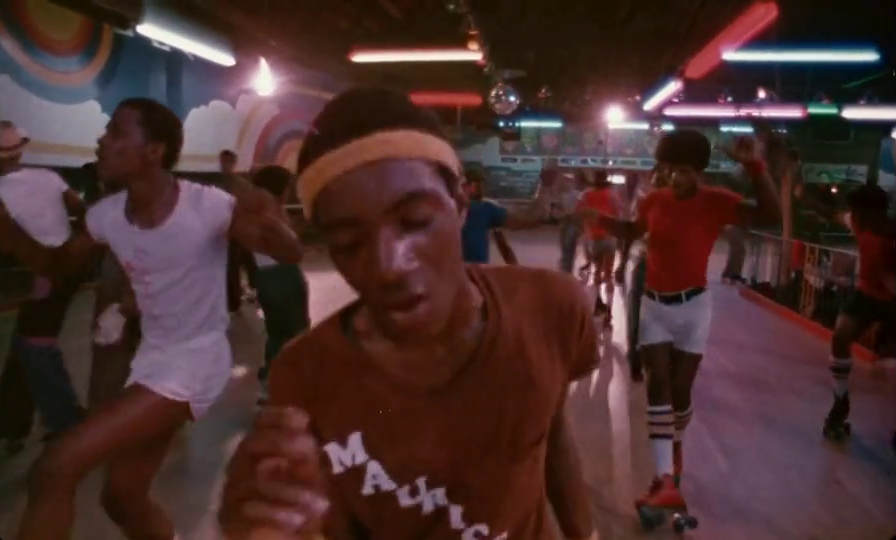
Young Black men jammin' to resident DJ “Big Bob” Clayton's grooves with Maurice Gatewood taking centre stage. Later in the 80s, the Empire Roller Disco would become a meeting point for gay Black and Latinx men who would hold rollerdance competitions. DP: Joseph Friedman.
The groove is driving and the characters jammin' in J. Terrance Mitchell's Get Rollin' (1980). We follow entrepreneur Vinzerrelli (Vinnie Vinzerrelli) who aims to become “the Muhammad Ali of #RollerBoogie” and to enter the Guinness Book of World Records as the first roller skater to make a million dollars. In his tow, smooth-as-silk Pat the Cat (Pat Richardson), who calls it a day to become a star roller derby player in “London, England”. Pat's wife and suddenly-ex-boss are less charmed by the idea. Those skates are expensive, and steam-cleaning those customised tees cost a dime, too. But Pat, he's determined. He's the Cowboy on Skates, rollin' his and everyone's blues away.
– Vinzerrelli
And in her own quiet way, there's soft-spoken physical therapist Inez from Alabama, who can be seen swerving around like a Disco Queen if not teaching a mangled man in Central Park how to rollerskate with flair and self-esteem.
A movie awash with so much groove and good vibes, so much love for Black life on #Brooklyn's Empire Roller Disco rink, it can not do other than put a huge grin on your face.
“Welcome home, Ethan.”The Searchers (John Ford, 1956)
Jun
21
National Arizona Day

Ethan Edwards (John Wayne) facing the endless desert. DP: Winton C. Hoch.
“You know, I wish I had my board with me… even if I could just wax it once in a while.” Dark Star (John Carpenter, 1974)
Jun
17
International Surfing Day
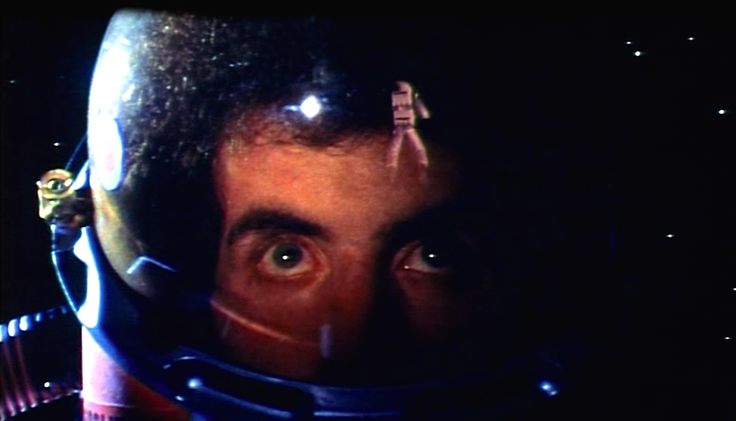
Lt. Doolittle (Brian Narelle) dreaming of catching that wave. DP: Douglas Knapp.
On the other end of outer space, far far away from existentialist odysseys and crypto-fascist space operas, there's a little stoner cosmos where a small, dilapidated starship manned by long-haired freaks drifts about.
– Lt. Doolittle
Dark Star started out as a highly ambitious, underfunded student film that, in a blessed pre-Lucas, pre-blockbuster universe, got recognised for its #counterculture glory. In the early 70s, when #surfing was not yet mainstream and a handful of restless pioneers continued west despite the lack of mainland, a cross-pollination between beach blond daredevils and stoner culture happened.
Carpenter's laidback space odyssey fully embraces the beach bum spirit; it's meandering, incoherent, and whatever the superlative of no-budget may be. With at its core: #boredom, the most honest form of cinema.
“This isn’t playtime, kids, it’s work.” “Any star can be devoured by human adoration, sparkle by sparkle.”Kid 'N' Hollywood [Kid in Hollywood] (Charles Lamont, 1933)
Jun
12
Child Labor Day
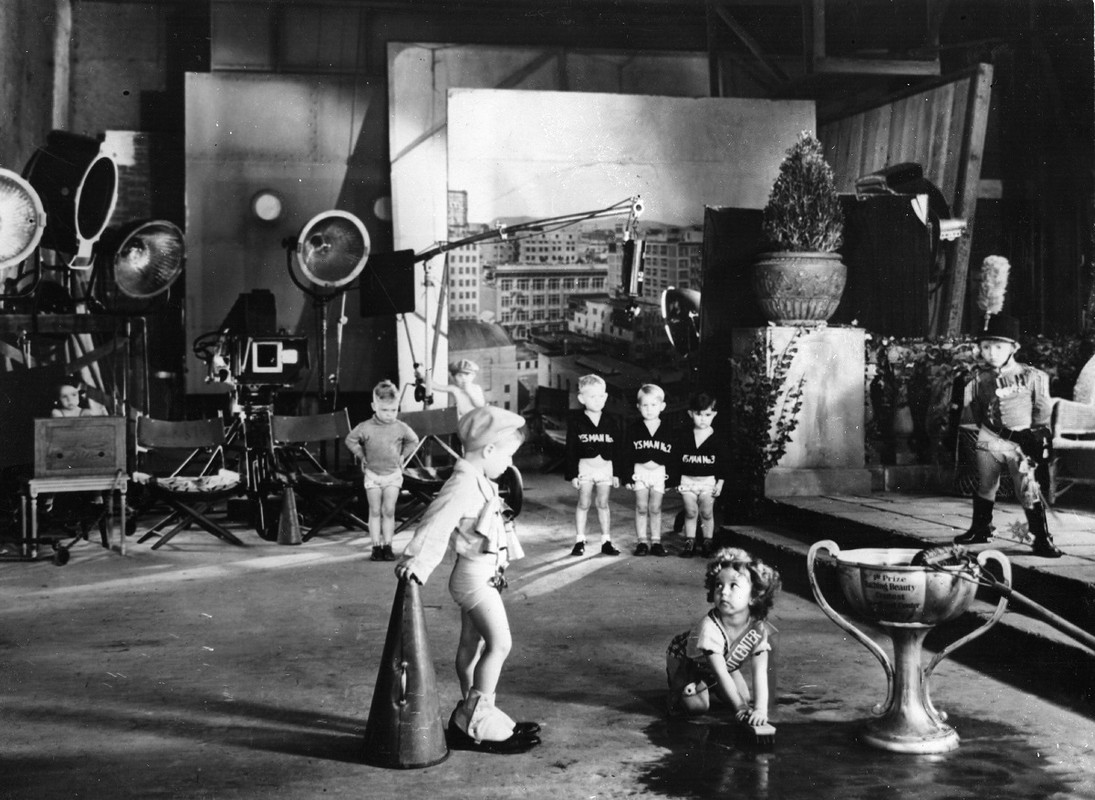
A movie set on a movie set in Kid 'N' Hollywood. Shirley Temple can be seen on her knees scrubbing the floor as the character Morelegs Sweettrick. Standing next to her with a bullhorn and adult spats is Arthur J. Maskery as the tyrannical movie director Frightwig von Stumblebum. As in all the Baby Burlesk shorts, the kids are only half-dressed with their diapers showing.
Despite Shirley Temple's clear statements of what was going on on set during her child actress days, her output remains wildly popular. Who cannot resist her precocious lines, her cute dimples and baby doll innocence? And tapdancing with ánd befriending a Negro, during the segregation years? Miss Shirley truly was wise beyond her tender age.
Shirley Temple was “discovered” at the age of three by then-casting director Charles Lamont and promptly shot to stardom is his satirical Baby Burlesks: short talkies starring toddlers in diapers (a burlesque being a short, humorous skit). The gag was that the kids behaved and spoke like adults, seemingly unaware of being #children.
– Charles Lamont, Baby Burlesk director
In the Baby Burlesk Kid 'N' Hollywood, Temple plays a Hollywood hopeful called Morelegs Sweettrick, who gets her break when the star doesn't feel like showing up (kids, right? no discipline).
While Kid 'N' Hollywood is relatively innocent, others in the series are much more sexualised (War Babies (1932) stars Temple as prostitute Charmaine) or plain racist (Kid 'in' Africa (1933) with Temple as Madame Cradlebait, bringing civilisation to Black kids portraying fearsome cannibals).
I'm not the one to take events from the past out of context and apply modern-day sensibilities to them, and with the advent of #ChildLabor laws for #Hollywood child actors, many of the horrors recalled by Temple and her peers are history. School is mandatory, long hours restricted, and using twins to split the workload is definitely not unheard of.
And then I watched teevee, and saw chubby, precocious blondes with dental plates to hide their missing baby teeth, wearing lipstick and baby-dolls, grinding and crooning with no backup in sight. And I remember Miss Temple say:
– Shirley Temple
Suspense (1913)
Triangular split-screen in Suspense (1913). While the Wife (Lois Weber) is on the phone with her Husband (Val Paul), unbeknownst to them the Tramp (Sam Kaufman) cuts the telephone wire.
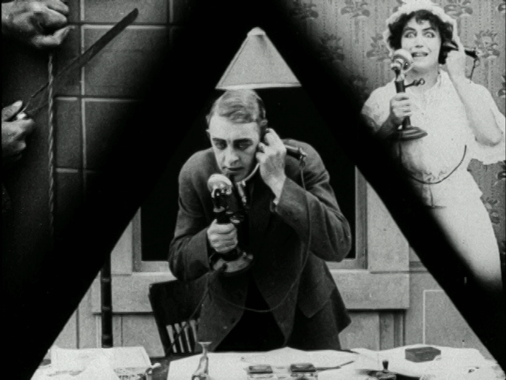
June 11: say Hi! on #SayHiDay
Suspense (Phillips Smalley & LoisWeber, 1913)
Now he's in the…
Suspense is not only the title of this short silent thriller, but also the state of mind the viewer is put into as soon as the film opens. Using POV (point-of-view) shots and breaking the fourth wall, the imminent threat – a vagrant trespassing and creeping up to a lone woman and her newborn child – creeps up on us. We know we're safe, on the other side of the screen, but the Tramp (a particularly haunting Sam Kaufman) looks us right in the eye. He passes us on the stairs, but he's going around us so he must be, hopefully, aware of our presence.
Meanwhile, we also see something that only cinema and books can give: multiple happenings at once. The Wife (Lois Weber) calls her Husband (Val Paul) on the phone. Suddenly the screen splits into three: in the middle, the Husband on call, listening to his Wife on the right who's begging him to hurry home. On the left, the Tramp. Unlike us, he cannot see the conversation promising a happy end. But instead that bringing some relief to the viewer, he cuts the phone cable. While we see that happen, we have no way to tell the Husband to make haste, or the Wife that the Tramp's getting closer.
What's striking too is the omnipresence of modernity: the couple's home and Husband's office have telephones and therefore electricity, and the Husband speeds off in an automobile. The cinematography for the telephone and car chase scenes are filmed and edited with great knowledge of the technical possibilities of the medium; split-screen (only gathering popularity much later, see Pillow Talk (1959), and the usage of the Entfesselte Kamera [unchained camera], the latter a mid 1920s German invention.
A similar, triangular split-screen scene from Michael Gordon's Pillow Talk (1959) with (LtR) Eileen (Valerie Allen), Jan Morrow (Doris Day), and Brad Allen (Rock Hudson) on the party line. With Ms Day's character centred, we know that she's the one to identify with in this particular scene. DP: Arthur E. Arling.
With that, Suspense not only preceded Italian futurist cinema, but also the usage of suspense as a cinematic technique. Now go and watch, and remember
it's only a movie it's only a movie it's only a movie
#Bales2023FilmChallenge #PhillipsSmalley #LoisWeber #SamKaufman #USA #ShortFilm #SilentFilm #drama #suspense #crime #thriller #HomeInvasion #1910s ★★★★☆
“Now, until the break of day,
Through this house each fairy stray…”A Midsummer Night's Dream (William Dieterle + Max Reinhardt, 1935)
Jun
10
Superman Week

Oberon (Victor Jory) – King of the Fairies – on his horse with Puck (Mickey Rooney) – a trickster sprite. While they ride of, Oberon's cape flows behind them through the trees, supported by the fae. A lot of the other-worldly fairy sparkle was accomplished by generous amounts of DuPont® cellophane and cinematographer Hal Mohr's contribution of trimming the trees with aluminium paint, cobwebs, and small metal particles. DP: Hal Mohr.
Capes, cloaks, and mantles are everywhere in Dieterle and Reinhardt's lavishly outfitted A Midsummer Night's Dream. The dreamlike #CostumeDesign by Max Rée and the uncredited Milo Anderson is as much as a personality as #Shakespeare's characters are.
– Oberon, Act 5, Scene 1
Any reports of Kenneth Anger's presence as the Changeling Prince are greatly exaggerated.
“Wouldn't you rather I did it out of love, than have one of those wood things do it out of their own animal hungers?”Lemora: A Child's Tale of the Supernatural (Richard Blackburn, 1973)
Jun
4
meat

A fancy looking silver plate with what appears to be raw meat. DP: Robert Caramico.
– Lemora
